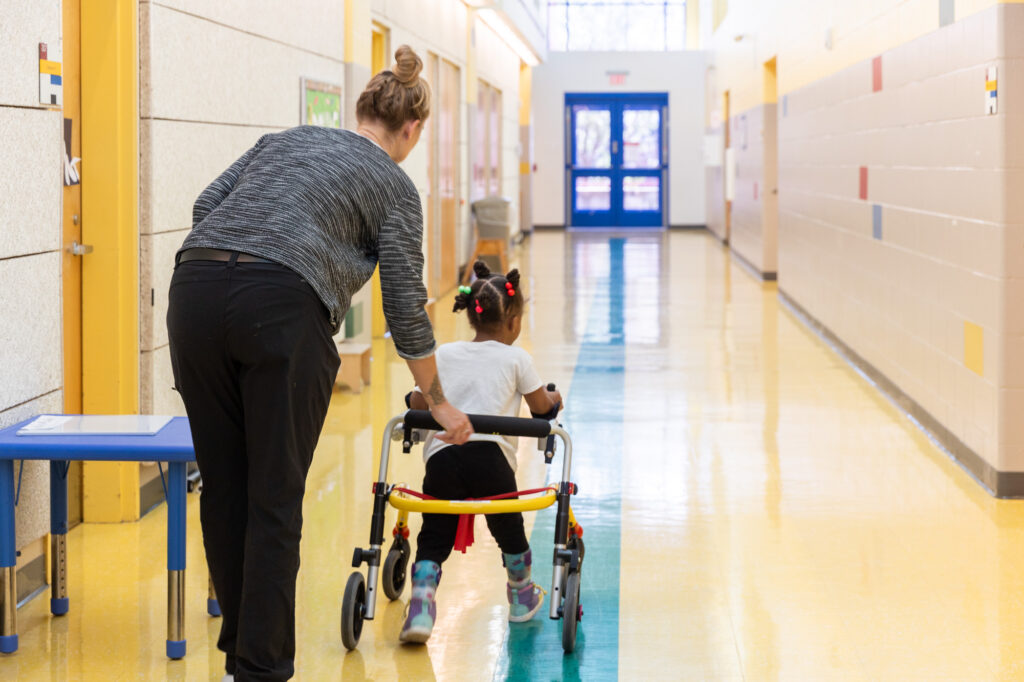
Spinal cord injuries (SCIs) can be life-changing events. SCIs affect movement, sensation and daily activities. Approximately 302,000 Americans are living with an SCI, with around 18,000 new cases each year. Globally, an estimated 15 million people are living with SCIs. Spinal cord injuries can happen due to:
- Falls
- Road traffic injuries
- Violence
- Sports injuries
- Tumors
- Degenerative or vascular conditions
- Toxins
- Infections
- Birth defects
An SCI can result in the complete or partial loss of sensory and/or motor functions below the injury level. While SCIs can lead to paralysis, there’s inspiring news. Advancements in technology are offering a beacon of hope for people with SCI paralysis. These innovations can help improve physical function and empower people to regain their independence and live more fulfilling lives.
Redefining independence: How can technology help SCI paralysis?
Technology can make a difference and pave the way for exciting tools for a brighter future for people with paralysis due to a spinal cord injury. These technologies work in a few key ways:
- Retraining the brain and nervous system to regain control over movement
- Directly stimulating muscles to improve function
Additionally, there are technologies that are designed to help people manage their daily activities and stay connected to the world around them.
Technologies that can empower people with SCI paralysis
The specific technology used by each person will vary depending on their individual needs. However, technologies that are making a difference can include:
- Interactive metronome (IM) — Imagine using music and light to help retrain your brain and body to work together. An interactive metronome is a unique tool that uses visual cues and rhythmic beats to improve movement coordination. During an IM session, users follow a flashing light bar synced with a beat. They then try to do various movements like reaching or stepping in time with the rhythm. This repetitive practice can help retrain neural pathways and improve motor control. This can potentially lead to smoother and more purposeful movements.
- Ekso exoskeleton system — The Ekso exoskeleton system feels like something straight out of a superhero movie. This powered robotic suit can be strapped onto a person’s legs and torso. It provides external support and controlled movement. With the help of therapists, people with spinal cord injury paralysis can use the Ekso system to practice walking and doing other weight-bearing activities. It helps improve physical function and provides a boost of confidence and motivation. It does this by helping people to experience the feeling of standing and walking again.
- Vital stimulation — Vital stimulation is a specialized form of neuromuscular electrical stimulation (NMES). It can be used to help treat swallowing disorders. Spinal cord injuries can weaken or paralyze the muscles responsible for swallowing. This difficulty in swallowing can be dangerous and limit a person’s ability to safely eat and drink. Vital stimulation uses tiny electrical pulses to help activate weakened swallowing muscles. This can help retrain the muscles and improve swallowing function. Regaining control over the ability to swallow safely can reduce a person’s dependence on feeding tubes and improve their quality of life.
- Functional electrical stimulation (FES) cycles — FES is a technology that uses electrical currents to directly stimulate the muscles. FES cycles are customized programs designed to activate specific muscle groups for various activities. It can be used to stimulate leg muscles that help with standing, walking or cycling. It requires ongoing training and may not be suitable for everyone. However, it can offer the potential to improve mobility and independence for people with paralysis.
- Bioness H200 — Regaining hand and wrist function is crucial for doing daily tasks like eating, dressing and writing. The Bioness H200 is a neuromuscular electrical stimulation system designed to help improve hand function. It uses gentle electrical stimulation to activate muscles in the forearm and hand. It can allow people to regain some grip and grasp ability. It can be a valuable tool for people with paralysis who want to regain independence in performing everyday activities.
Additional tools to help overcome challenges of SCI paralysis
In addition to technologies that can help people potentially regain certain functions, there are technologies that can help people with paralysis perform tasks, improve mobility and increase their independence. These assistive technologies help address challenges that paralysis can present and can help individuals overcome physical limitations and make it easier to do daily activities. Some examples include:
- Mobility aids
- Transfer and lifting devices
- Environmental control systems
- Communication aids
- Assistive devices for activities of daily living
- Computer access aids
- Orthotic devices
- Pressure relief mattresses and cushions
By incorporating technologies into their daily lives, people with spinal cord injury paralysis can enhance their independence, mobility and overall quality of life. Each device can be tailored to meet their specific needs and preferences, empowering them to participate more fully in activities at home, at work and in their community.
A brighter future starts with Ability KC’s spinal cord rehabilitation
Ability KC has proudly provided services to help change and shape the lives of thousands of people with disabilities and their families for over 75 years. Our team is made up of highly qualified professionals who are all passionate about providing the highest level of care to help people of all ages achieve their unique goals. Through our advanced technologies and personalized treatments for patients of all ages, we strive to continue to provide the best care in our region. Together, we can work to develop a care plan that combines intensive outpatient rehabilitation services, goal-based group therapies and interest-based resources to help you overcome your specific challenges and meet your individual goals.
Contact our team today for more information or to schedule an initial appointment.